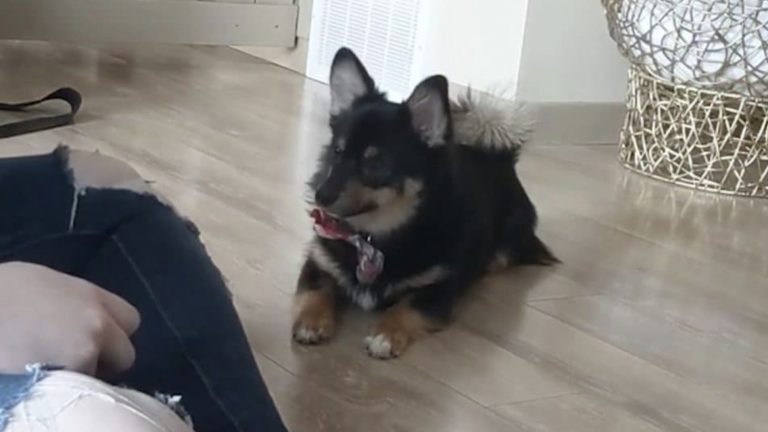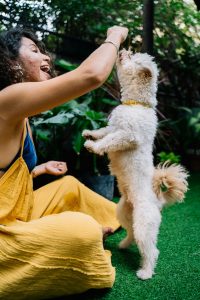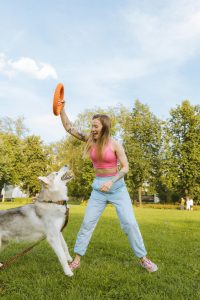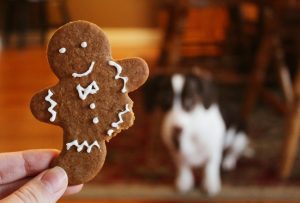I wanted to write an article on this topic for a while. And it finally came to fruition. Shaping is one of the best dog training methods you can use to achieve particular behavior. What is it? Well, simply put, the shaping dog training technique is a process in which you gradually teach your dog a new action or desired behavior by rewarding him during each step of the process.
By the time you get to the target behavior, you have rewarded your dog lots of times. Shaping is great for breaking up a potentially complicated action into smaller parts. It is the same as when you are at college, and you have to learn a long lesson. By dividing it into paragraphs and small bullet points, you can learn it easily.
Today, I will try to give you a few examples and explain how to get a new behavior with the free shaping technique.
Understanding shaping
The shaping dog technique is amazing to have in your positive dog training toolbox. You can use it for difficult tasks, complex tasks, and compound tasks.
It is a tool you use to teach behavior in small steps building up to the final behavior. Luring is part of the process.
Let me give you an example to understand it more visually and from a different perspective. We often compare dogs and babies, so here is an example.
When a baby or toddler learns to walk, you reinforce and praise your baby for crawling, then for standing, and then for taking one step, taking a few steps, and finally for walking. We reinforce good behavior by praising and attention.
And here is another example. Teach your child to brush his/her teeth. First, we praise our babies for doing a quick brush around their mouths. Then, we might expect more and praising when the child gives more effort into cleaning the surface of the teeth. And eventually, your child might begin to floss and mouthwash.
Well, if you didn’t know, in those two scenarios, we have used the shaping technique.
Benefits of shaping
Now, what I have to mention is that shaping requires a bit more technical skill from the dog owner or dog trainer than luring and/or capturing. You need to be patient, focused, and quite fast with your rewards. Usually, dog trainers use a clicker or a marker word for shaping. Here are some benefits of using shaping as one of your training methods.
- Makes your dog an active part of the training process
- Makes your puppy think for itself
- A dog that has been used to shaping will start to offer behaviors as it anticipates what you are looking for
- It is great for mental stimulation and mental exercise
- Helps with fearful dog and aggressive dog that does not respond well to luring
- Helps break down complicated tasks into simple steps
Getting started with shaping
Let’s talk about how you can get started with shaping dog behavior. The idea is, to begin with simple initial action, and then gradually build up.
I will give you a simple example. Let’s say, we want to teach our dog to retrieve a ball. Here is how you do it.
- You start by rewarding your dog for touching the ball with its nose
- Once your dog makes the initial connection, reward for touching the ball on the ground and then touching the ball on the ground after you throw it
- Built up the association with the ball until your dog follows the ball you have thrown
- The final behavior you want to achieve is you throw the ball, your puppy goes and retrieves it, and drops it back at you
Now, what I have to stress is that shaping takes time. You cannot expect amazing results on the first day. Remember, it is a step-by-step process. But with time, patience, and good timing, you can teach your dog to do anything. You can get any desired behavior through shaping.
Shaping for tricks and dog sports
Shaping can be used for obedience training, but also for learning new tricks and doing dog sports. You can train any fun behavior by starting small and building. For example, no dog will naturally wave hello. But you can teach your puppy to wave its paw with shaping. Here is a step-by-step guide for that trick. I am just giving you ideas so that you can grasp the concept.
Feel free to come up with any target behavior and think of your step by step process. Now, for waving.
- Start by rewarding your dog for lifting one paw off the ground. In the beginning, choose whether that will be the right or left paw. Stick to that paw through the training session
- When your dog lifts the paw 80 to 90 percent of the time, raise the criteria. You reward when your dog raises its paw to shoulder height. If that seems too fast and too much for your dog, go back an inch
- Once your dog is raising its paw to shoulder length, add click(marker word) and reward for any movement of the paw
- When your dog is doing any movement with the paw, start rewarding when your dog does up and down movement
- Last, but not least, add a verbal cue or hand signal to your goal behavior
Or, you can use shaping to teach your dog to roll over. Use the operant conditioning method to reward your dog in a sit position, then lie down, and then lie down and roll onto his back. Continue as you wish.







